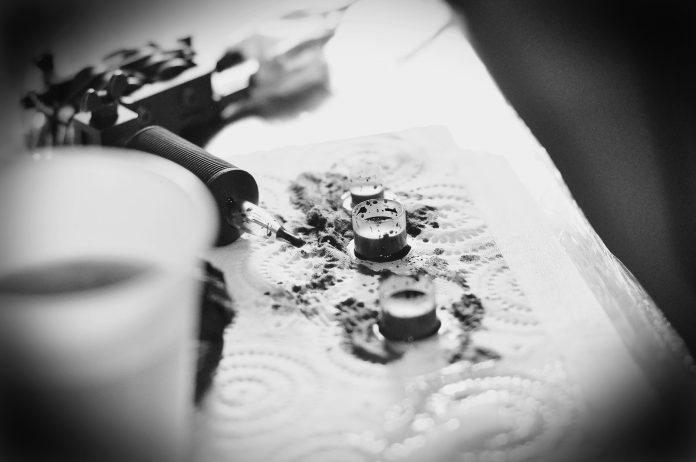Introduction
Tattoos have evolved from being a symbol of rebellion to a mainstream form of self-expression. However, the pain associated with getting inked remains a significant concern for many. Enter numbing creams, a solution that promises to make the tattooing process more bearable. This comprehensive guide explores everything you need to know about numbing cream for tattoos, from their benefits and application methods to potential risks and frequently asked questions.
What is Numbing Cream?
Numbing cream is a topical anesthetic applied to the skin to reduce or eliminate pain in a specific area. It works by blocking nerve signals in the body, preventing them from reaching the brain. This type of cream is commonly used in various medical and cosmetic procedures, including tattooing.
Types of Numbing Creams
There are different types of numbing cream for tattoos available, each with varying active ingredients and levels of effectiveness. The most common types include:
- Lidocaine-based creams: Lidocaine is a local anesthetic that temporarily numbs the skin. It is one of the most popular ingredients in numbing creams due to its effectiveness and safety.
- Tetracaine-based creams: Tetracaine is another powerful anesthetic, often used in combination with other agents for enhanced effect.
- Benzocaine-based creams: Benzocaine is a fast-acting anesthetic often used in over-the-counter numbing products. It is less potent than lidocaine or tetracaine but still effective for minor pain relief.
How Does Numbing Cream Work?
Numbing creams work by temporarily blocking the sodium channels in the skin’s nerve endings. When these channels are blocked, the nerves are unable to send pain signals to the brain, leading to a numbing effect in the area where the cream is applied.
Mechanism of Action
The primary mechanism of action for numbing cream for tattoos involves the following steps:
- Application: The cream is applied to the skin, usually about 30 to 60 minutes before the tattoo session begins.
- Absorption: The active ingredients in the cream penetrate the skin and start to work on the nerve endings.
- Numbing Effect: As the ingredients take effect, the area becomes numb, reducing or eliminating the sensation of pain.
- Duration: The numbing effect can last anywhere from one to four hours, depending on the strength of the cream and the individual’s skin type.
Why Use Numbing Cream for Tattoos?
Getting a tattoo can be a painful experience, especially in sensitive areas like the ribs, spine, or inner arm. Numbing creams can make the process more comfortable, allowing you to focus on the artwork rather than the pain.
Benefits of Using Numbing Cream
- Pain Reduction: The most obvious benefit is the significant reduction in pain during the tattooing process.
- Longer Sessions: With less pain to endure, you may be able to sit for longer sessions, allowing the tattoo artist to complete more work in one sitting.
- Less Anxiety: For those who are anxious about pain, numbing cream for tattoos can provide peace of mind, making the experience less stressful.
- Better Healing: Less pain during the tattoo process can lead to less trauma to the skin, which may result in better healing and a more vibrant final result.
Who Should Use Numbing Cream?
Numbing cream is particularly beneficial for individuals with a low pain tolerance, those getting tattoos in particularly sensitive areas, or anyone with anxiety about the pain involved. However, it is not necessary for everyone, and some people may prefer to experience the process without any numbing agents.
How to Choose the Right Numbing Cream for Tattoos
Choosing the right numbing cream for tattoos session is crucial to ensure effectiveness and safety. Here are some factors to consider:
Active Ingredients
- Lidocaine: Look for creams with a high concentration of lidocaine (usually 4-5%) for maximum numbing effect.
- Combination Formulas: Some creams combine lidocaine with other anesthetics like prilocaine or tetracaine for a stronger effect.
Duration of Effectiveness
- Short-acting creams: These may last 1-2 hours and are suitable for small tattoos or touch-ups.
- Long-acting creams: These can last up to 4 hours, making them ideal for larger tattoos or longer sessions.
Skin Sensitivity
- Allergies: Check the ingredients list to ensure you are not allergic to any components.
- Skin Type: Some numbing creams may be more effective on certain skin types. If you have particularly oily or dry skin, consult with your tattoo artist or a dermatologist for recommendations.
Brand Reputation
- Trusted Brands: Opt for well-known brands that have positive reviews and are commonly used in the tattoo industry.
- Product Reviews: Reading customer reviews can provide insights into the cream’s effectiveness and any potential side effects.
How to Apply Numbing Cream for Tattoos
Proper application of numbing cream for tattoos is essential to ensure it works effectively during your tattoo session.
Step-by-Step Guide
- Clean the Area: Wash the area where the tattoo will be applied with soap and water to remove any oils, dirt, or dead skin cells.
- Apply a Thick Layer: Generously apply the numbing cream to the area, ensuring it is fully covered.
- Cover with Plastic Wrap: After applying the cream, cover the area with plastic wrap. This helps to trap heat and moisture, enhancing the absorption of the cream into the skin.
- Wait for Activation: Leave the cream on for 30-60 minutes, depending on the product’s instructions. The skin should begin to feel numb during this time.
- Remove the Cream: Just before your tattoo session, remove the plastic wrap and gently wipe off the excess cream with a clean cloth.
- Tattoo Application: Your tattoo artist will then begin the tattooing process. The area should remain numb for the duration of the session, depending on the cream’s potency and the length of time it was left on.
Tips for Optimal Results
- Test for Allergies: Before your tattoo session, apply a small amount of numbing cream to a different area of your skin to test for any allergic reactions.
- Follow Instructions: Always follow the instructions provided by the manufacturer to avoid complications.
- Consult Your Tattoo Artist: Discuss the use of numbing cream with your tattoo artist beforehand. Some artists may have preferences or recommendations based on their experience.
Potential Risks and Side Effects of Numbing Cream
While numbing creams are generally safe when used as directed, there are potential risks and side effects to be aware of.
Common Side Effects
- Skin Irritation: Redness, itching, or swelling may occur at the application site, especially if you have sensitive skin.
- Allergic Reactions: Some individuals may experience an allergic reaction, which could include hives, difficulty breathing, or swelling of the face, lips, or tongue.
- Ineffectiveness: In some cases, the numbing cream for tattoos may not work as expected, either due to improper application or individual skin response.
Serious Risks
- Over-Absorption: If too much numbing cream is applied or left on for too long, there is a risk of the skin absorbing too much of the active ingredients, leading to toxicity. Symptoms of toxicity include dizziness, nausea, vomiting, and in severe cases, seizures.
- Infection: Improper application, such as applying the cream to broken or irritated skin, can increase the risk of infection.
How to Minimize Risks
- Follow Instructions: Adhere strictly to the application instructions provided by the manufacturer.
- Consult a Professional: If you have any pre-existing skin conditions or allergies, consult a dermatologist or your tattoo artist before using numbing cream.
- Monitor Symptoms: Pay attention to how your skin reacts to the cream. If you experience any severe side effects, seek medical attention immediately.
Numbing Cream Myths and Misconceptions
There are several myths and misconceptions about the use of numbing creams for tattoos. Understanding the facts can help you make informed decisions.
Myth 1: Numbing Cream Will Ruin My Tattoo
One common concern is that numbing cream will affect the quality of the tattoo. In reality, when used correctly, numbing cream for tattoos does not interfere with the tattoo ink or the healing process. However, it is essential to consult your tattoo artist, as some may prefer not to use numbing agents due to personal or professional reasons.
Myth 2: Numbing Cream Completely Eliminates Pain
While numbing cream significantly reduces pain, it may not eliminate it entirely. Some individuals may still feel slight discomfort, especially in deeper layers of the skin.
Myth 3: All Numbing Creams Are the Same
Not all numbing creams are created equal. Different products have varying concentrations of active ingredients and may work differently depending on your skin type and the area being tattooed. It is essential to choose a product that suits your specific needs.
Myth 4: Numbing Cream Is Only for People with Low Pain Tolerance
While numbing cream is popular among those with low pain tolerance, it is also used by individuals getting tattoos in particularly painful areas or for long sessions. It’s a personal choice, and there’s no shame in wanting to reduce pain during the process.
Popular Numbing Creams for Tattoos: A Comparative Overview
There are numerous numbing creams available on the market, each with its own strengths and weaknesses. Below is a comparative overview of some popular options:
1. Hush Anesthetic Gel
- Active Ingredient: Lidocaine (4%)
- Duration: Up to 2 hours
- Pros: Fast-acting, specifically designed for tattoos, vegan-friendly
- Cons: Higher price point, requires reapplication for longer sessions
2. Dr. Numb
- Active Ingredient: Lidocaine (5%)
- Duration: Up to 3 hours
- Pros: High concentration of lidocaine, widely available, effective for long sessions
- Cons: Stronger formula may cause skin irritation in sensitive individuals
3. Ebanel Numb520
- Active Ingredient: Lidocaine (5%)
- Duration: 1-2 hours
- Pros: Affordable, includes aloe vera and vitamin E for skin soothing
- Cons: Shorter duration, not as potent as other options
4. Numb Master
- Active Ingredient: Lidocaine (5%)
- Duration: Up to 2 hours
- Pros: Over-the-counter availability, easy to apply, budget-friendly
- Cons: May require a thick layer for effectiveness, can cause mild irritation
5. Uber Numb
- Active Ingredient: Lidocaine (5%)
- Duration: 1-3 hours
- Pros: Long-lasting, includes moisturizing agents, widely used for tattoos
- Cons: Can be greasy, may not be suitable for very sensitive skin
How to Store Numbing Cream
Proper storage of numbing cream for tattoos ensures its effectiveness and safety. Here are some tips on how to store your numbing cream:
Temperature Control
- Room Temperature: Store numbing cream at room temperature, away from direct sunlight and heat sources. Extreme temperatures can degrade the active ingredients.
- Refrigeration: Some numbing creams can be stored in the refrigerator to extend their shelf life, but always check the packaging for specific storage instructions.
Avoid Moisture
- Dry Storage: Keep the cream in a dry place to prevent contamination. Moisture can cause the cream to degrade or become less effective.
Expiration Date
- Check Expiry: Always check the expiration date before using numbing cream. Expired products may not be effective and could potentially cause adverse reactions.
Frequently Asked Questions (FAQs) about Numbing Cream for Tattoos
1. Can I apply numbing cream myself before getting a tattoo?
Yes, you can apply numbing cream yourself, but it’s essential to follow the instructions carefully. Make sure to discuss it with your tattoo artist before your appointment.
2. How long before my tattoo appointment should I apply numbing cream?
Typically, numbing cream should be applied 30-60 minutes before your tattoo session. The exact timing may vary depending on the product’s instructions.
3. Will numbing cream affect the quality of my tattoo?
When used correctly, numbing cream should not affect the quality of your tattoo. However, it’s important to consult with your tattoo artist, as some may prefer not to use it.
4. Can I reapply numbing cream during a long tattoo session?
In some cases, you can reapply numbing cream during a long session, but it should be done with caution. Always consult your tattoo artist and follow the product’s instructions to avoid over-absorption.
5. Is numbing cream safe for all skin types?
Most numbing creams are safe for all skin types, but those with sensitive skin or allergies should conduct a patch test before applying it to a large area. If you have any concerns, consult a dermatologist.
6. Are there any alternatives to numbing cream for pain relief during tattoos?
Alternatives to numbing cream for tattoos include oral pain relievers (like ibuprofen), meditation techniques, or simply taking breaks during the tattoo session. However, these methods may not be as effective as numbing cream for severe pain.
Conclusion
Numbing cream for tattoos can be a game-changer for those looking to reduce pain and anxiety during the tattooing process. By choosing the right product, applying it correctly, and being aware of potential risks, you can make your tattoo experience more comfortable and enjoyable. Always consult with your tattoo artist before using numbing cream, and follow all instructions to ensure the best results.




[…] completing a tattoo, proper aftercare is crucial to prevent infection and ensure the tattoo heals […]